mvweebles
Guru
- Joined
- Mar 21, 2019
- Messages
- 7,780
- Location
- United States
- Vessel Name
- Weebles
- Vessel Make
- 1970 Willard 36 Trawler
Get the load to the gunwales by using an H-frame vs an A-frame.
Peter
Peter
Do you keep your fore and aft guy lines on end of the boom attached/rigged all the time, or do you rig these only before deploying the fish?
We don't have any aft guy lines, just forward. They are a fixed length so when deployed they're perpendicular to the hull. The 1' forward diagonal brace (pole) keeps the 3.5" poles from moving forward, aft or rotating when raising or lowing them. Here are a few pictures. The first is at rest. The third is the fore guy attachment point a the hull. The last one is the end of the pole looking forward. The wire is for the top and forward guy. The 1/2" double braid is about 8' in length to give the fish some dampening and to smooth out the ride.
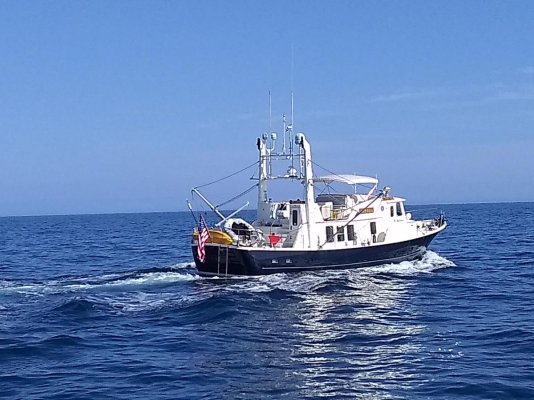
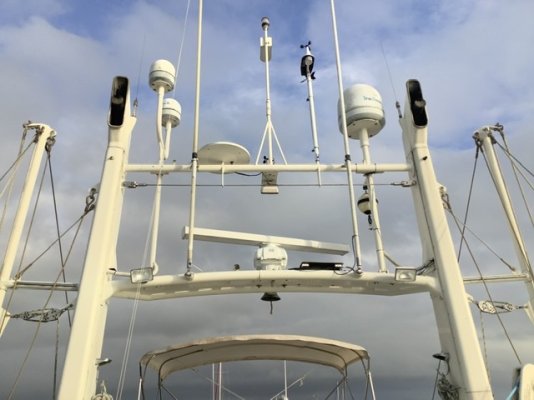
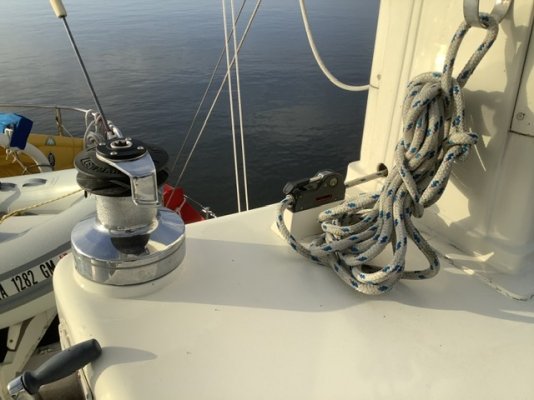
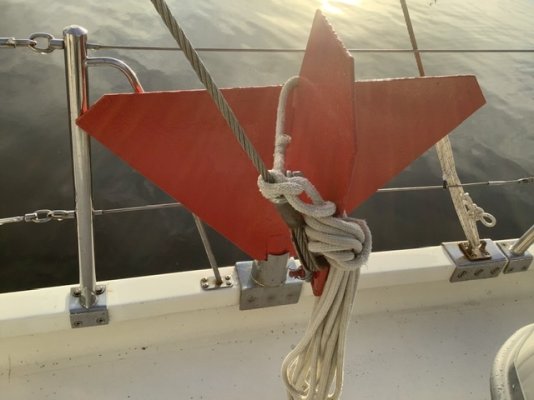
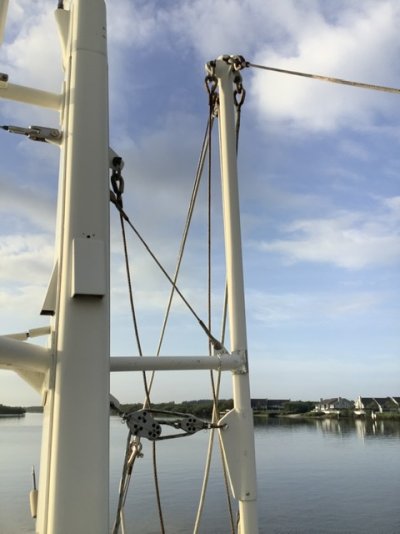
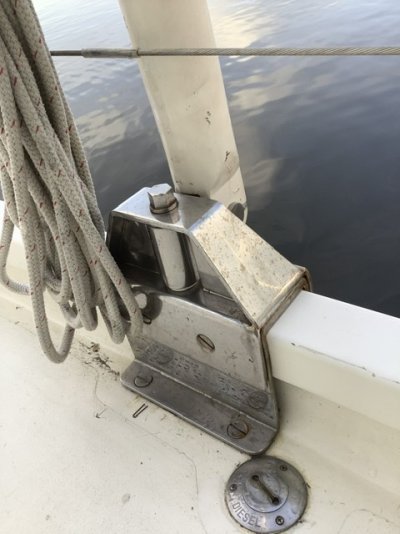
Larry M,
I'm running through a loads analysis on the rigging/structural requirements on my own just to get an idea of the forces involved. It appears most 1/4" 316 7x19 S.S. cable only has a WLL of around 1,100 to 1,200lb. There is a 5:1 safety margin on these numbers, so the breaking strength is around 4,900lb. If your fish are exerting 2,000lb through that cable, you're well above the WLL, but about 40% of the breaking strength. Was this understood in the design of the system?
I think a 5:1 safety margin is a bit aggressive, but I just want to see if I'm missing something here. It seems to me that you'd want a "fuse" in the system - a line that would part and release the fish if it got snagged on something underwater...
ofshoreskiff has it about right from what I read and hear.
I would think CG may have something to do w it but ?
The point (fore and aft) where the boat rises and falls the least or just ahead of that point. Heard that too but I think that would be too far aft. If too far fwd lots of strain is put on the stab system .. cabin, mast and poles, cabin or boat via gunwales while addressing a head sea.
On a fish boat frequently to most of the time fishing activities or fishing gear occupies the ideal place.
And how the stern swings to make turns may not work depending on CG and keel ctr of keel pressure.
[…]
First pic is of a very experienced fisherman from Craig Alaska.
Second pic is of a Beebe designed boat.
You would think Beebe would know what he was doing but the stab. rigging looks way far aft to me. The Dixie ll appears to be closer to midship so I'm thinking it may not be that critical. There so far aft on the Beebe boat I wouldn't be too sup- prized to hear tales of getting the gear in the props.
Cap’s boats PO seems to have done that it was problematic.
He used the foremast ... and it’s location.
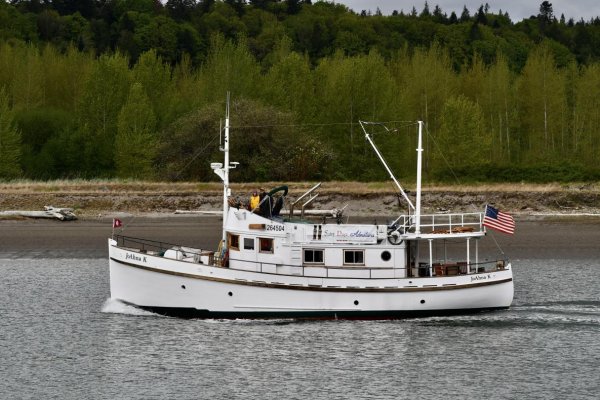
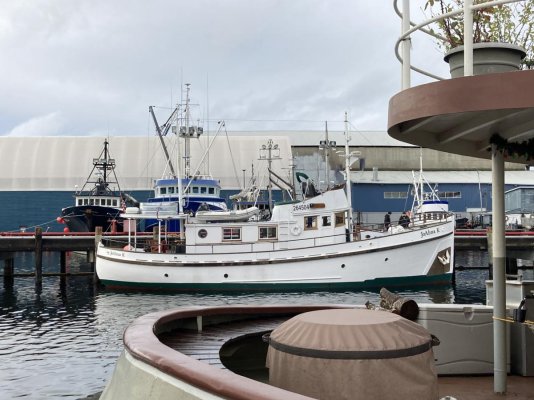
The problem I have with the latest edition of Voyaging Under Power is it is sometimes difficult to know what is Beebe's original writing, and what text, opinion, experiences have been added by the subsequent editors. I assume the original calculation was by Beebe, and then Umstot expanded on it with his experiences.
That said, note his calculation is where the working end of the poles should fall in relation to the boat length, not their mounting point. I was really lousy at trig at school but one could assume that the poles could angle forward or aft of their mounting location to accommodate structural and mast considerations, while still managing the loads involved. The potential transfer of forces in such a setup is where my experience, education and intellect fail :lol:

